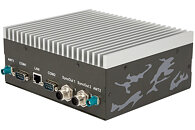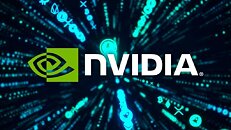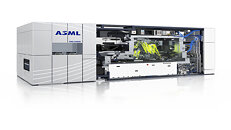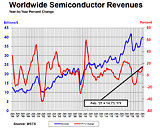
Report Suggests Samsung and LG Pushing Wider Adoption of LED Wall Displays at Cinemas
Samsung and LG are among an number of tech companies reportedly pushing for radical changes in the cinema viewing experience. In a piece published by the Hollywood Reporter last week, new behind-the-scenes information has come to light about an effort to replace the (some will say tried and true) traditional cinema theater projection system with LED walls. The vast majority of international theater chains rely on a front projection method (via a back of the booth), and very few locations have a more state-of-the-art LED display-based system in place. The Culver Theater (naturally located in Culver City, CA) is one of a hundred cinemas worldwide to possess a Samsung Onyx LED display - although the tech on show is said to be of an older standard. Industry insiders have been invited to attend demonstrations of a newer generation LED wall technology destined for cinemas in the future, and early impressions are purported to be mixed.
A cinema-based LED wall display functions in a similar way to how a modern LED-based flat screen TV works - although on a much greater massive scale - with particular benefits of the technology resulting in fantastic performance in terms of high dynamic range and peak brightness. The main downside of having a tightly packed array of large LED panels is the resultant heat output - critics of the technology state that it will be difficult to implement an adequate cooling system (through air conditioning) to tame the wall's temperature increasing properties. The power required to operate the LED panel array (plus required cooling solution) is said to be much higher than that of an old-fashioned projector's relatively modest draw from the electricity supply. An LED wall will also completely negate the traditional placement of loudspeakers behind a cinema's front-placed screen - and sound engineers will need to explore a different method of front audio channel output within the context of a next generation LED theater room.
A cinema-based LED wall display functions in a similar way to how a modern LED-based flat screen TV works - although on a much greater massive scale - with particular benefits of the technology resulting in fantastic performance in terms of high dynamic range and peak brightness. The main downside of having a tightly packed array of large LED panels is the resultant heat output - critics of the technology state that it will be difficult to implement an adequate cooling system (through air conditioning) to tame the wall's temperature increasing properties. The power required to operate the LED panel array (plus required cooling solution) is said to be much higher than that of an old-fashioned projector's relatively modest draw from the electricity supply. An LED wall will also completely negate the traditional placement of loudspeakers behind a cinema's front-placed screen - and sound engineers will need to explore a different method of front audio channel output within the context of a next generation LED theater room.









































